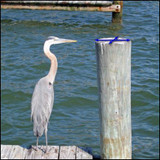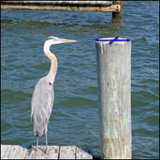
Getting accurate measurements for your wooden pilings is essential to ordering the right pile caps the first time. Whether you're working on a dock, pier, or waterfront structure, this comprehensive guide will walk you through the proper measuring techniques to ensure a perfect fit.
Why Accurate Pile Measurements Matter
Ordering the correct size pile caps protects your investment and extends the life of your wooden pilings. Properly fitted pile caps prevent water damage, wood rot, and structural deterioration by creating an effective barrier against the elements. Taking precise measurements ensures you receive the right product without costly returns or delays.
Essential Tools for Measuring Pilings
Before you begin, gather these basic tools:
- Measuring tape
- Pencil or marker for noting measurements
- Notepad or smartphone to record all measurements
- Ladder or boat (if measuring from water level)
Step-by-Step Guide: How to Measure Wooden Pilings
Step 1: Measure in Two Directions
Wooden pilings are rarely perfectly round. Marine pilings, dock pilings, and pier posts often have an oval or irregular shape due to natural wood characteristics and weathering.
How to do it:
- Measure the diameter across one direction at the top of the piling
- Rotate 90 degrees and measure perpendicular to your first measurement
- Record both measurements for each piling
Example: A piling might measure 10 inches in one direction and 10.25 inches in the other direction.
Step 2: Determine the Largest Measurement
Always use the largest measurement when selecting your pile cap size. This ensures the cap will fit over the entire piling, even at its widest point.
If your piling measures 8 inches by 8.5 inches, you would order pile caps based on the 8.5-inch measurement.
Step 3: Understand Pile Cap Sizing Tolerance
Pile caps are manufactured with built-in tolerance to accommodate slight variations in piling dimensions. However, it’s important to always order the next size up. For example:
- An 8-inch pile cap will fit pilings measuring up to 8 inches
- If a piling measures 10 ¼ inches, order a 10 ½ inch cap
- A 12-inch pile cap fits a piling with an outer diameter under 12 inches
Step 4: Measure Every Single Piling
This is critical: Do not assume all pilings are the same size.
Even when pilings are purchased from the same supplier and installed during the same project, natural wood variations can cause individual pilings to differ by as much as 1.5 inches or more.
Best practice: Create a simple chart listing each piling location (Piling 1, Piling 2, etc.) with its corresponding measurements.
Step 5: Account for Irregular Shapes
Weathered pilings, treated wood posts, and marine pilings often develop irregular shapes over time due to:
- Natural wood aging
- Sun exposure and UV damage
- Water absorption and drying cycles
- Marine organism activity
Pile caps are specifically designed with flexibility to accommodate these imperfections. A quality pile cap will fit securely even on slightly irregular pilings.
Measuring Tips for Different Piling Types
Round Wooden Pilings
Measure the diameter at the top in two perpendicular directions. Round pilings often have slight variations that make two measurements essential.
Square or Rectangular Pilings
Measure each side individually. Even treated timber posts marketed as 6x6 or 8x8 can vary from nominal dimensions.
Weathered or Damaged Pilings
Measure at the point where the pile cap will sit. If the top is damaged or deteriorated, you may need to measure slightly below the top surface where the cap will rest.
Floating Dock Pilings
For floating dock systems, measure pilings at low tide when they're most accessible. You may need to use a boat to reach and measure accurately.
Avoiding Common Measuring Mistakes
Mistake 1: Measuring Only One Direction Solution: Always measure in two perpendicular directions to capture the true maximum dimension.
Mistake 2: Assuming All Pilings Are Identical Solution: Measure every single piling individually, even in new installations.
Mistake 3: Ordering Based on Nominal Size Solution: Measure the actual piling dimensions, not what size was supposedly installed.
Mistake 4: Ignoring Small Variations Solution: Use the largest measurement when selecting pile cap size.
Mistake 5: Not Recording Measurements Solution: Write down all measurements immediately to avoid confusion. Make a diagram showing which pile cap goes on which piling.
When to Measure for Pile Cap Replacement
The best time to measure for new pile caps is:
- During low tide for marine and coastal installations
- In dry conditions, when you can safely access all pilings
- Before removing old caps, so you can compare measurements
- During dock maintenance, when other repairs are being made
Frequently Asked Questions
Q: What if my piling measures between two standard sizes? A: Always round up to the next larger pile cap size for proper fit and coverage.
Q: Can pile caps fit on tapered pilings? A: Yes, measure at the top where the cap will sit. Most pilings taper slightly, and pile caps are designed to accommodate this.
Q: How much larger should the pile cap be than the piling? A: The pile cap can be the same size as the piling. However, if your piling size falls between standard cap sizes, order the next size up to ensure a proper fit and allow for easy installation.
Q: Do I need to remove old pile caps before measuring? A: For the most accurate measurements, yes. Old caps can hide weathering or damage that affects sizing.
Q: What if my measurements seem inconsistent? A: Wood naturally expands and contracts with moisture. Take measurements during similar weather conditions and use the largest measurement.
Final Checklist Before Ordering Pile Caps
Before placing your order, confirm you have:
- Measured each piling in two perpendicular directions
- Recorded all measurements clearly
- Identified the largest measurement for each piling
- Counted the total number of pile caps needed
- Determined if any pilings require special or custom sizing
- Considered ordering 1-2 extra caps for future needs
Conclusion
Properly measuring your wooden pilings ensures you receive the right pile caps the first time, saving money and protecting your waterfront investment. Remember the key principles: measure in both directions, check every piling individually, and use the largest measurement when selecting your cap size.
The built-in tolerance in quality pile caps means small variations won't affect fit or performance. By following this comprehensive guide, you'll have the confidence to measure accurately and order the perfect pile caps for your dock, pier, or marine structure.
Ready to protect your pilings? Start by measuring today, and enjoy years of maintenance-free protection for your waterfront property.



